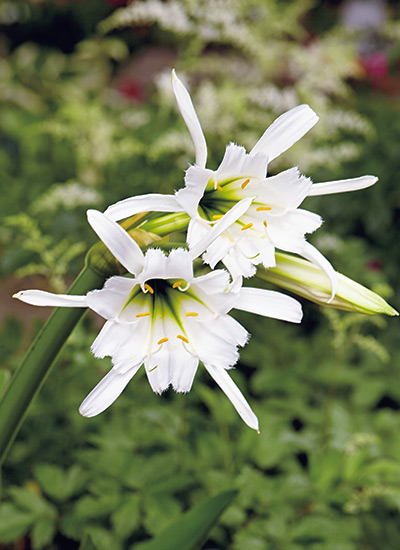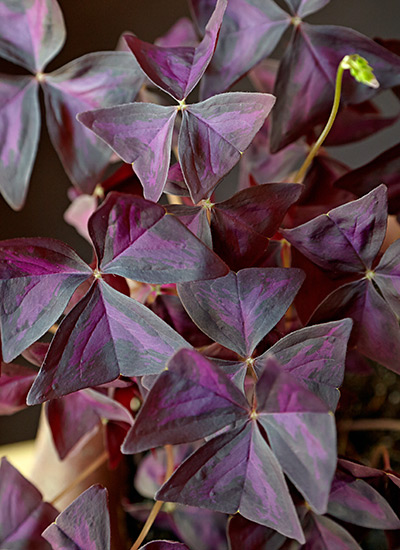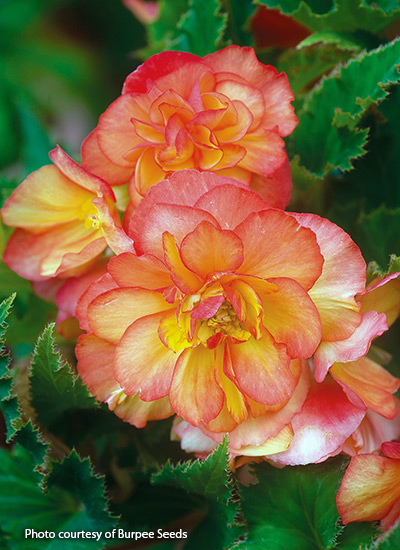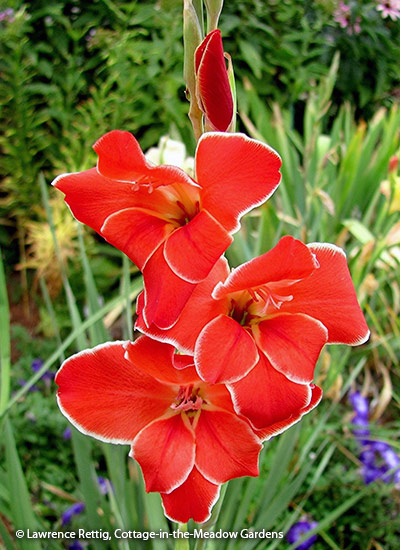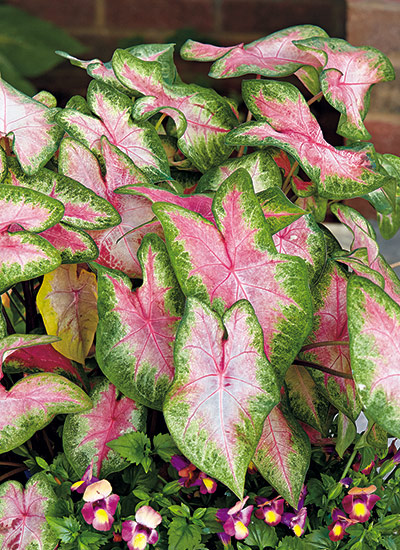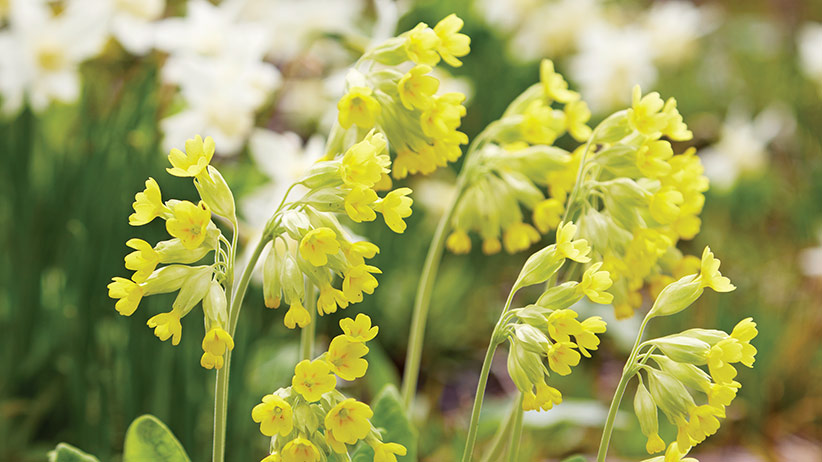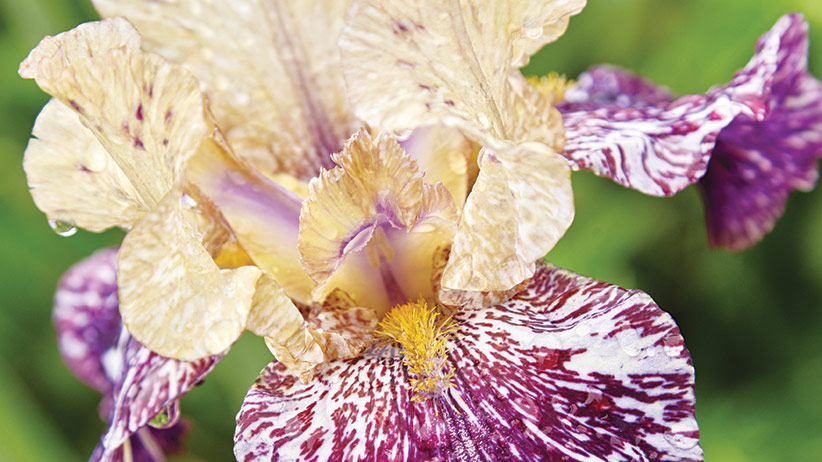Add tropical flair to your garden
Few plants add as much impact or color as tropical bulbs. These heat loving plants, with their bold, sensational blooms or striking, texture-rich foliage. These plants grow from bulbs, tubers, or rhizomes but you'll see them referred to by the general term, bulbs, here. They're all perfect for creating a tropical feel wherever they’re planted, from the front to back of the border, in containers or even shade.
Staking tips
Providing support for flower stalks may seem tedious, but without some help, heavy blooms can flop over, especially after a storm. It’s easy, and pretty discreet, for flowers to stand tall with just two items: green twine and bamboo stakes.
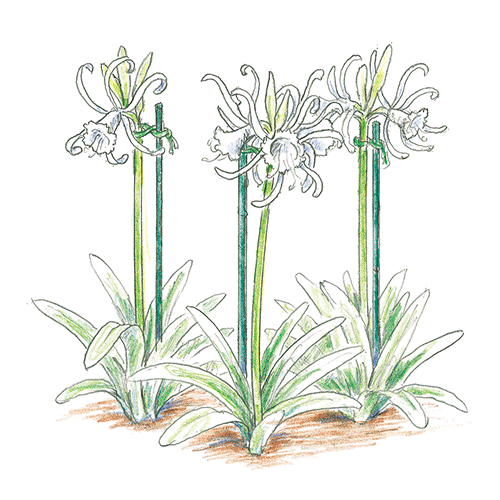
Staking Peruvian daffodil
Peruvian daffodil, above, has thin stalks that aren’t strong enough to hold up clusters of big flowers. Stick a single stake a few inches from the stem when buds form and tie the two together with twine, just like you see in the illustration.
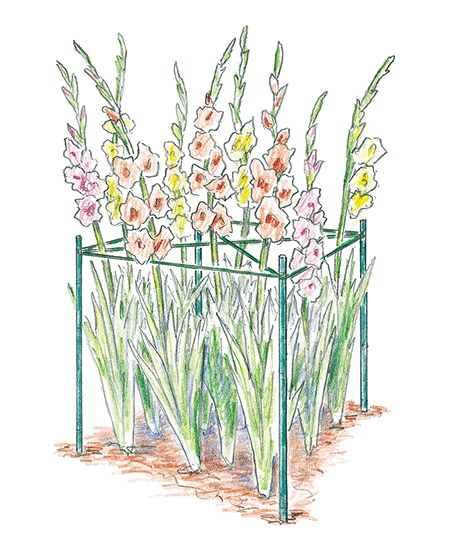
Staking gladiolus
You don’t have to individually stake a clump of tall-growing gladioli, though — plants can hold each other up with a little extra support. As buds begin to form, use four stakes to create the points of a square or rectangle around the planting, and wrap twine around the perimeter. Then weave the twine through the planting, winding it around stakes at opposite corners, to make an “X” through the middle of the clump, just like you see above.
How-to store tropical bulbs, corms & tubers overwinter
Because most of these bulbs aren't very cold-hardy, these tender bulbs will need some extra attentions at the end of the season. Some, such as oxalis, can be treated as annuals or overwintered in containers indoors. If you have the space, just leave them in a sunny window until spring. The rest, however, like Peruvian daffodil and rain lily, will need a little extra care to survive winters in USDA zones 7 or 8 and colder. Find out more about these 8 favorite tropical bulbs and how to take care of them below.
If they won’t make it through winter outdoors in your zone, follow these tips to store these tropical plants. You can find more detailed steps on how to overwinter tender bulbs here.
- Just before or after the first frost, use a fork to carefully dig up bulbs several inches from the base of the plant.
- Keeping them sorted by type, gently shake away extra soil, cut their stems down to a couple of inches and wash them. Disease can enter and spread through wounds or bruised spots, so this is a good time to check for both.
- Toss any that are damaged or were pierced while digging, and let the healthy ones dry out of direct sunlight for at least 24 hours.
- Next, layer them with peat moss, in a container that will allow air to circulate. Leave enough room between each bulb, tuber or corm so they aren’t touching.
- Then move the storage container to a low-light spot where temps will stay between 40 to 50 degrees F and check inside about once a month.
- If any are beginning to shrivel, just moisten the peat moss with a few sprays of water.
You Might Also Like:
Colorful summer containers for sunny spots
Shabby Chic Door Planter
Flower & Plant Guide




